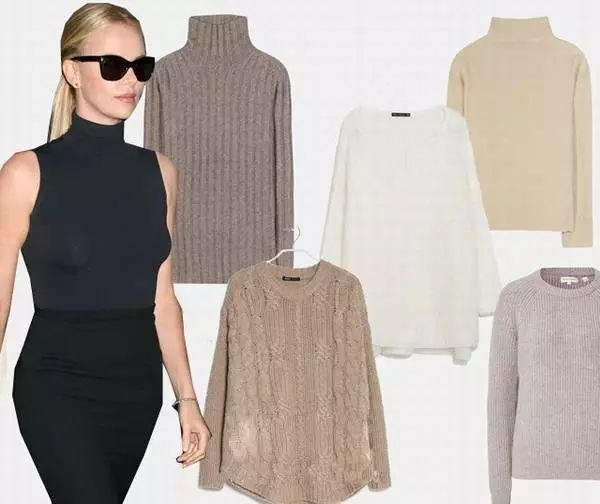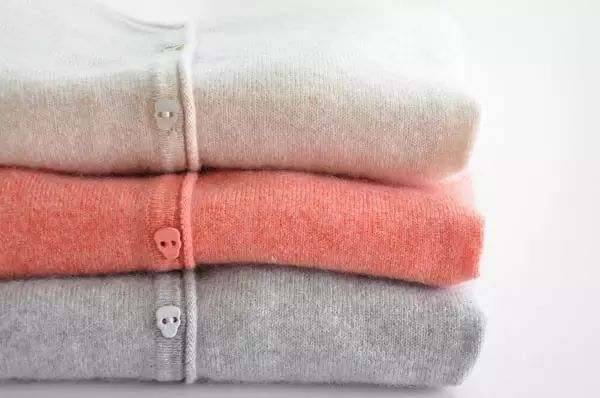Woolen sweater originally refers to a knitted sweater made of wool, which is also the meaning recognized by ordinary people. In fact, "wool sweater" has now become synonymous with a type of product, which is used to generally refer to "knitted sweater" or "knitted sweater". "Wool Knitwear". Wool knitwear is mainly made of animal hair fibers such as wool, cashmere, rabbit hair, etc., which are spun into yarn and woven into fabrics, such as rabbit sweaters, Shenandoah sweaters, sheep sweaters, acrylic sweaters, etc. It is a big family of "cardigans".
Classification of woolen sweater fabrics
1. Pure wool sweater fabric. The warp and weft yarns are all fabrics made of wool fibers, such as pure wool gabardine, pure wool coat, etc.
2. Blended wool sweater fabric. The warp and weft yarns are made of wool fibers blended with one or more other fibers, such as wool/polyester gabardine blended with wool and polyester, wool/polyester/viscose tweed blended with wool and polyester, and viscose.
3. Pure fiber fabrics. The warp and weft yarns are all made of chemical fibers, but are processed on wool textile equipment to imitate woolen sweater fabrics.
4.Interwoven fabric. A fabric composed of warp yarns containing one fiber and weft yarns containing another fiber, such as spun silk tweed fabrics with spun silk or polyester filaments as warp yarns and wool yarn as weft yarns in worsted fabrics; woolen fabrics Among them, there are rough clothing, military blankets and plush fabrics with cotton yarn as the warp yarn and wool yarn as the weft yarn.
17 steps to inspect woolen sweaters before leaving the factory

1. Right style
The sealed sample approved according to the customer's order requirements shall be compared with the bulk style.
2. Hand feel
The washing water should be fluffy (according to the customer's OK batch or cloth requirements) and should not have any odor.
3. Matching marks (various types of marks)
The mark should be in the center of the car and should not be high or straight, forming a trapezoid. The beading path of the car mark should be even and should not be beaded. The mark should be discarded, and the mark line should be in the same color. The content of the main mark, ingredient mark and the method of cartoning should be correct. Refer to the ingredient notification sheet. The marking lines must be cut cleanly.
4. Match the badge
Whether the color number of the name tag is correct, whether it matches the number of the main mark, and whether the position of the name tag is correct.
5. Matching foot marks
The position of the model number and the carving method are correct, and no footmarks should fall off.

6. Look at the shape of the shirt
1) Round neck: The shape of the collar should be round and smooth, without high or low collars or corners. The collar patch should not have ear loops. The collar patch should not be ironed or pressed too hard to make marks. There should be no dents on both sides of the collar. The collar should be positioned at the back. There should be no wrinkles, and the seam collar strips should be even.
2) V-neck: The V-neck shape should be V-straight. The collars on both sides should not have large thin edges or lengths. They should not be heart-shaped. The neckline should not be skewed. The collar patch stop should not be too thick and valley-shaped. The collar patch should not be mirrored or pressed. Too much death creates traces and mirrors.
3) Bottle (high, base) collar: The shape of the collar should be round and smooth, not skewed, the neckline should be straight and not wavy, the top of the collar should not be concave, and the inner and outer threads of the collar should be separated and not bunched together.
4) Pick up the collar: Check whether the thread pick-up in the collar is loose or skipped stitches, whether the thread ends are well collected, and the collar shape should be rounded and smooth.
5) Chest opening: The chest patch should be straight and not long or short. The chest patch should not be snaked or hung on the feet; the soles of the feet should not be pecked into a pointy shape. The button position should be in the middle, and the button surface should cover the bottom patch by about 2-5mm. (Determined by the needle type and the width of the chest patch), the button spacing should be consistent, whether the button line and buttonhole line match the color of the shirt, the button line should not be loose, whether the button door has gaps and rot, and whether there is any pink mark on the button position. Buttons should not be too tight.
7. Look at the shape of the arms
There should be no large or small arms on both sides of the arms, whether there are any errors in the weaving of the arms, whether there are loose ends at the arms and the stitching needs to be reinforced, etc.
8. Look at the sleeve shape
The top of the sleeves should not be skewed or have excessive wrinkles that cannot be compressed. There should be no airplane sleeves or twisted bones. The sleeve bones should not be bent or ironed to create large thin edges. Both sides of the sleeve bottom bones should be symmetrical. The cuffs should be straight and not flared. , (the colors of the shirt should be aligned with the strips), glue the edges, and twist the bones.
9. Look at the clamping position
There should be no valleys at the bottom of the clamp, no snaking at the clamping position, the two clamping positions should be symmetrical, the top of the clamp should not be pecked, and the bottom of the clamp should not be sewn with high or low stitching, it must be symmetrical; there should be no edge eating when sewing, thick needles Or choose a plum blossom clip (cross) for the bottom of the thin-needle three-flat and four-flat thick shirts.

10. Shirt body bone position
The bone position of the shirt body must not be sewn to cause snakes, sticky edges, large thin edges, twisted bones, or cramps (the strips of the second-color shirt must be symmetrical and cannot be knitted with more turns and fewer turns).
11. Sleeve cuffs and sleeve feet
Whether it is straight and not wavy, there should be no pecks or flying on both sides, the cuffs of the shirt legs and sleeves should not be recessed, the oak roots should match the color, the sleeve cuffs should not be trumpet-shaped, the shirt legs and sleeve cuffs should be pinned, and the shirt legs and sleeves should be pinned. The ribs on the mouth should not be sparse, uneven, or high or low.
12. Bag shape
The bag mouth should be straight, the stitching on both sides of the bag mouth should not be uneven and must be straight, the bag positions on both sides should be symmetrical and should not be high or low, the bag sticker should match the color of the shirt, and whether there are any holes in the bag.
13. Bone (stitch)
The bones must be straight and not snakey, and whether there are any jumpers or loose thread ends.
14. Car zipper
The zipper should be straight and there should be no snags or jumpers. There should be no loose ends when picking up the zipper. The zipper head should not be pecked. The bottom of the zipper should be aligned with the hem of the shirt, and the thread ends should be neatly collected.
15. Look at the shirt
Stains, oil stains, rust stains, uneven lettering, upper and lower colors, different fenders (accessories), whether the front and back panels match the color of the sleeves, and there should be no length on both sides of the body of the shirt (shirts with different colors should be straight and even) Check whether there are any discoloration of clothing marks, stitches, stitches, cramps, coarse and fine hairs, flowered hairs, grasses, hairs, knots, gun marks, pink marks, matted hair and second-color shirts (check the same before and after) ).

16. Leading force
The collar tension of adult shirts must exceed 64CM (men) and 62CM (women).
17. Overall appearance requirements
The collar should be round and smooth, the left and right sides should be symmetrical, the lines should be smooth and straight, the chest patch should be flat, the zipper should be smooth, and the button spacing should be consistent; the stitch density should be appropriate; the bag height and size should be symmetrical, and the number of secondary color turns should not be wrong. The strips and grids should be symmetrical, the length of both sleeves should be equal, the hem should not be wavy, and the phenomenon of bone twisting should be eliminated. Nylon should not be covered on the surface. Avoid scalding, yellowing, or aurora. The surface should be clean and free of oil stains, lint, and flying particles. There are no hair or dead creases; the ends of the hem of the clothes should not be lifted when unfolded flatly, and the sutures of various parts should not be opened. The size, specifications and feel should meet the customer's sample requirements.
Post time: Jan-09-2024





